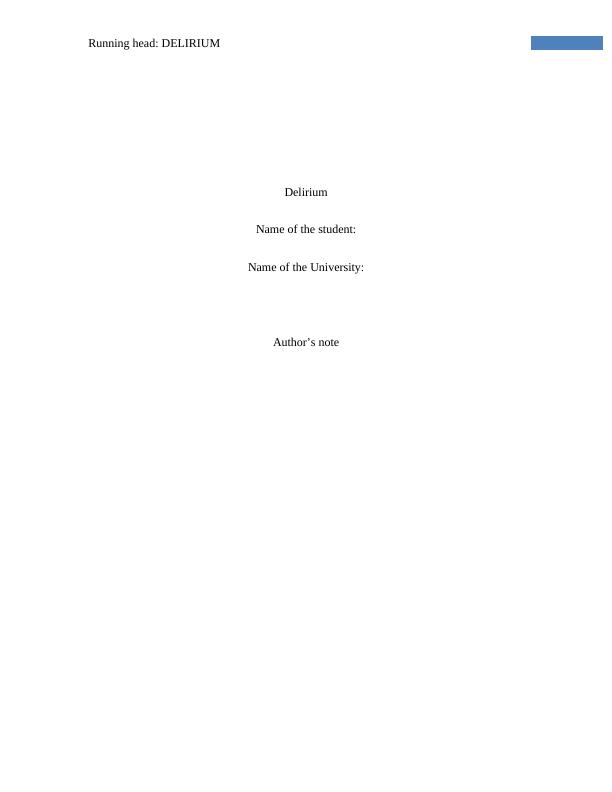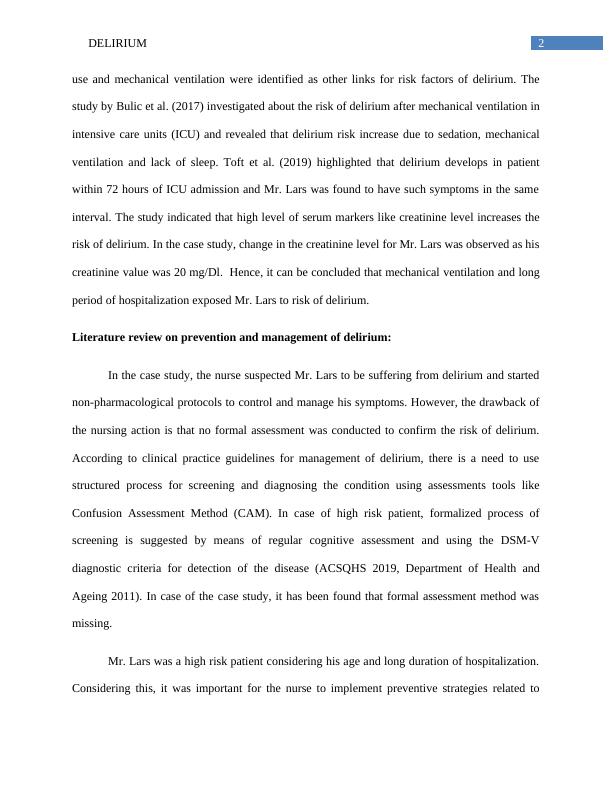Delirium - Risk Factors | Case Study
Review of pharmacological interventions for the treatment of delirium in critically ill adults
10 Pages2392 Words25 Views
Added on 2022-08-27
Delirium - Risk Factors | Case Study
Review of pharmacological interventions for the treatment of delirium in critically ill adults
Added on 2022-08-27
ShareRelated Documents
End of preview
Want to access all the pages? Upload your documents or become a member.
Nursing Care - Evidence Based Nursing Care for Delirium
|11
|2808
|22
Clinical Prediction Rule for Catheter Associated Urinary Tract Infections in ICU Patients
|6
|1402
|156
CNA345 Evidence Based Practice: A Nursing Research Assignment
|11
|2848
|306
His past medical history consists of pneumonia
|13
|3509
|11
Prevention and Management of Central Line Associated Bloodstream Infection (CLABSI)
|9
|2813
|306
Policies and Practice For Old Age (pdf)
|19
|4575
|67



